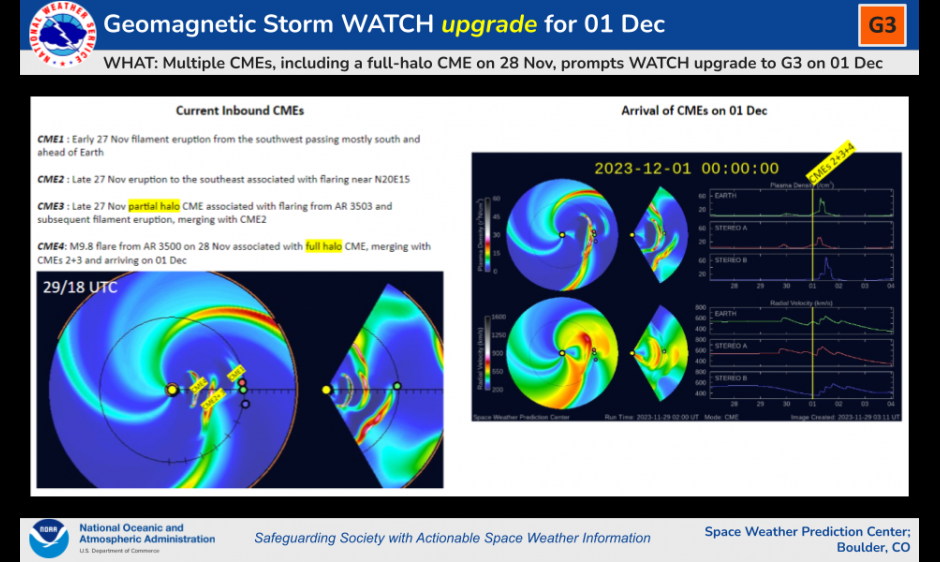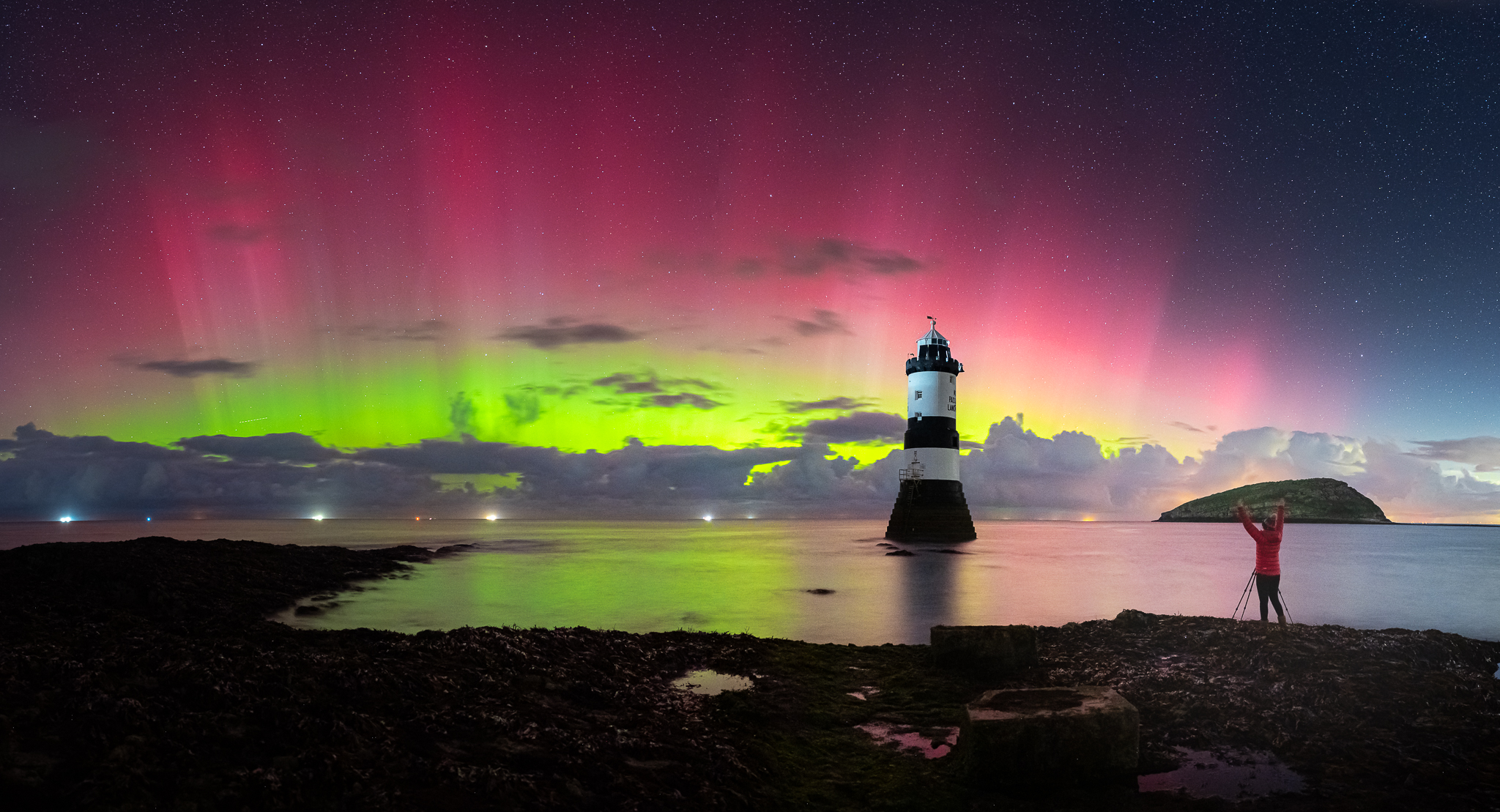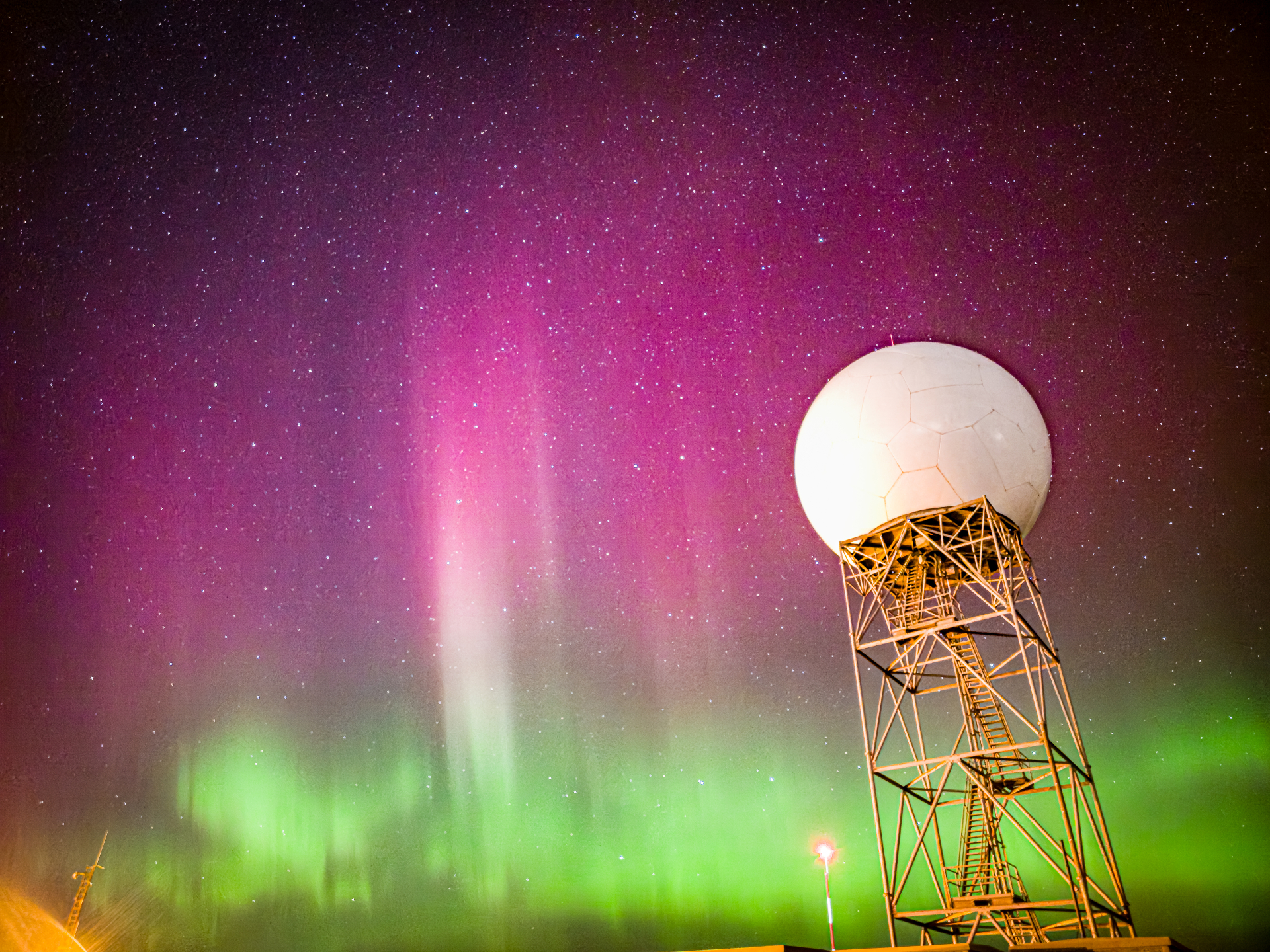Powerful 'Cannibal' solar burst will hit Earth tonight. Widespread auroras predicted
Strong geomagnetic storm conditions are predicted with aurora displays possible even at mid-latitudes.

Aurora chasers around the world are eagerly awaiting the arrival of a super-hot plasma eruption — known as a coronal mass ejection (CME) — that will slam into Earth tonight.
The rapid Earth-bound CME left the sun on Nov. 29 during a powerful M9.8-class solar flare eruption. But it isn't alone. The speedy plasma outburst will merge with several slower upstream CMEs that left the sun a day earlier (Nov. 28), creating a "Cannibal CME" that will likely trigger a strong geomagnetic storm akin to a Nov. 5 event that supercharged auroras and STEVE around the world.
Related: The next 4 to 5 years will be the best time to see the northern lights this solar cycle
Geomagnetic storms are disturbances to Earth's magnetic field caused by large expulsions of plasma and magnetic fields from the sun's atmosphere in the form of CMEs.
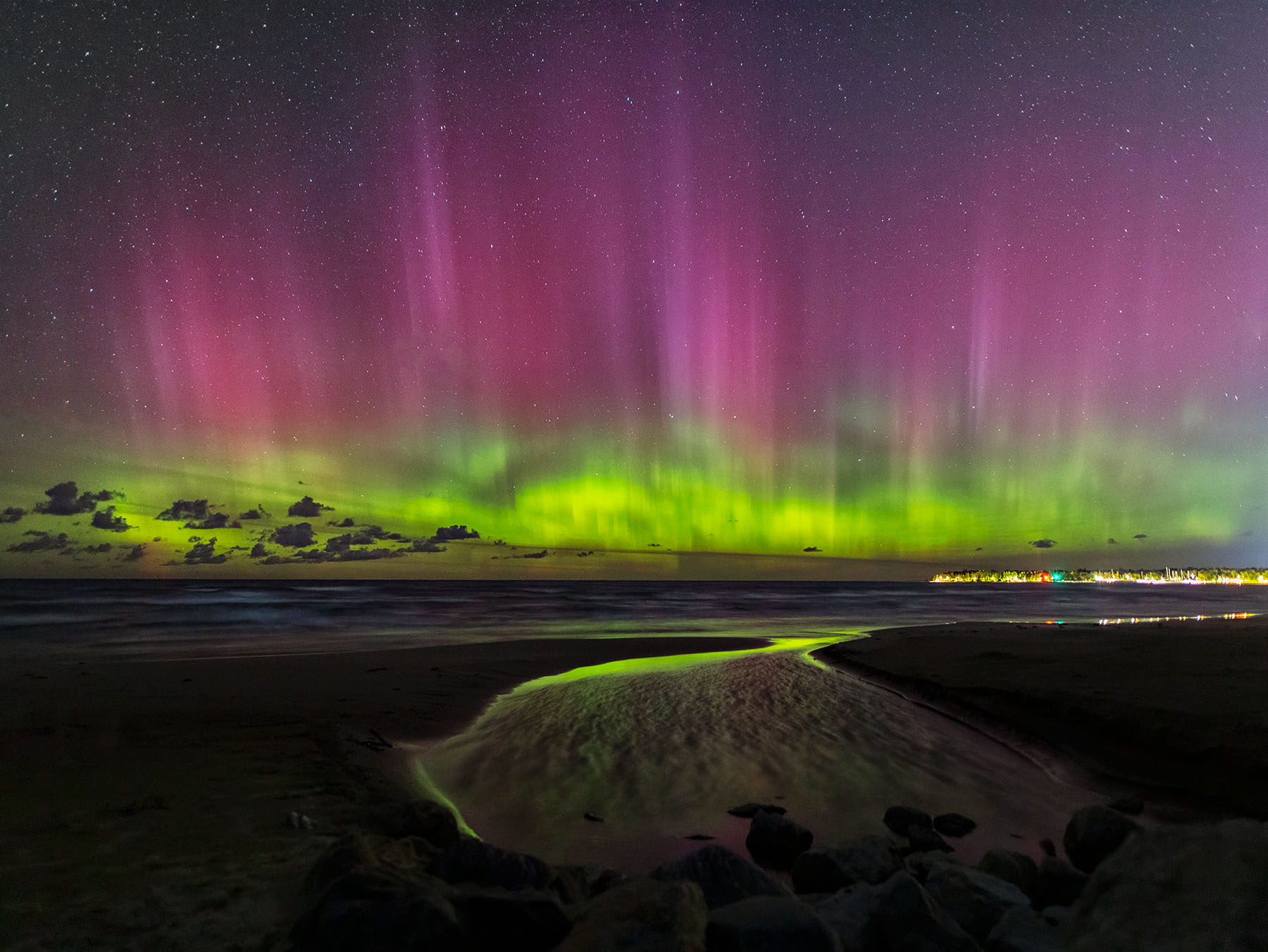
If you capture photos of the aurora displays and would like them to be considered for a photo roundup story please email them over to spacephotos@space.com.
If the Cannibal CME strikes as predicted, the U.S. National Oceanic and Atmospheric Administration (NOAA) forecasts strong (G3) geomagnetic storm conditions with an impressive aurora forecast for the U.S. NOAA ranks geomagnetic storms on a scale running from G1, which can cause an increase in auroral activity around the poles and minor fluctuations in power supplies, up to G5. This most extreme level can cause complete HF (high frequency) radio blackouts on the entire sunlit side of the Earth, lasting for several hours.
What can we expect?
The last G3 storm on Nov. 5 created phenomenal aurora displays around the world, with northern lights reported as far south as Greece and Turkey.
On Nov. 5, astrophotographer Gareth Mon Jones caught a stunning view of the aurora above Penmon Lighthouse, Anglesey.
Breaking space news, the latest updates on rocket launches, skywatching events and more!
"A whopper of a display on Anglesey tonight," Jones wrote on X. "my girlfriend was happy to see one of the best displays of the northern lights in a long time"
Steven lomas managed to photograph mysterious STEVE above Dunstanburgh Castle Northumberland, UK.
"It was the strongest display of the aurora that I have seen in 8 years of photography" lomas told Space.com. "The highlight was seeing the corona and also STEVE!"
lomas also captured quite the mythical scene with vibrant green and red auroras dancing over Dunstanburgh Castle.
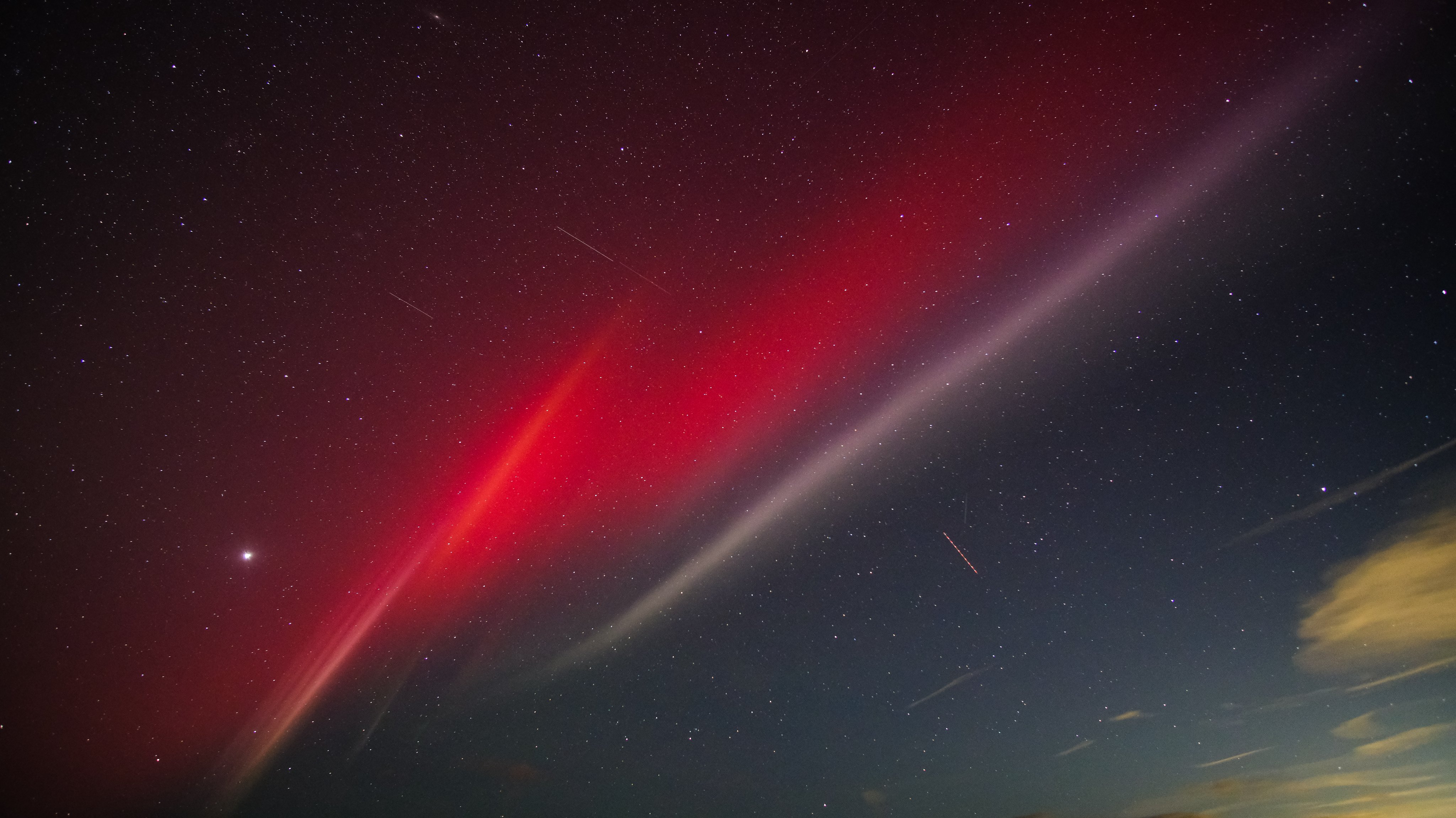

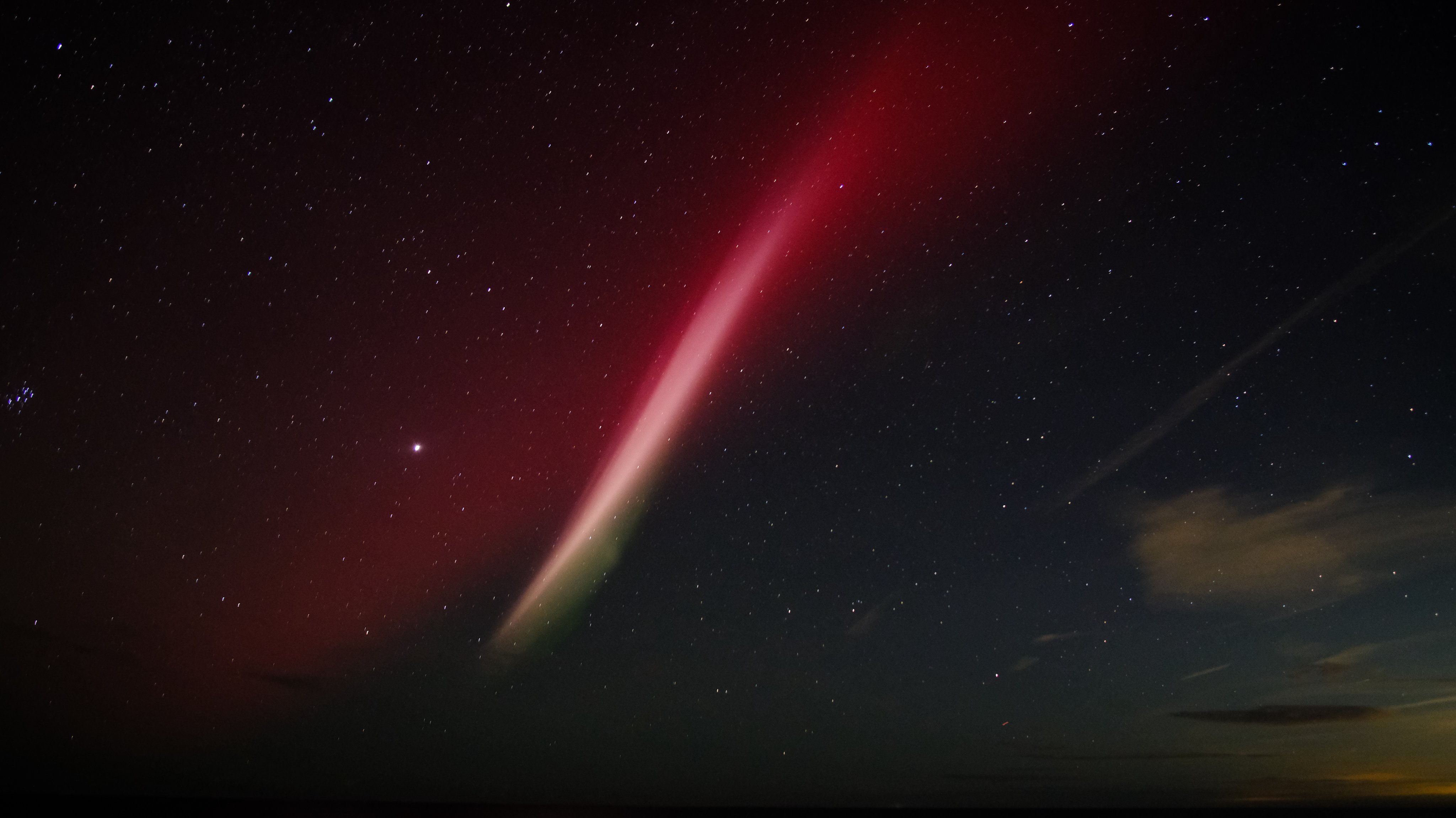
Meteorologist Angel Enriquez was working the evening shift at the National Weather Service in Glasgow, northeast Montana when his colleague alerted him to the aurora light show.
"A fellow coworker was out gathering her own pictures when she texted 'GO OUTSIDE NOW'" Enriquez told Space.com. "I took the tripod to the darkest spot of the office, which happens to be next to the radar, and took some memorable photos."
If the upcoming geomagnetic storm is anything like the one we experienced on Nov. 5 we could be in for quite the treat.
Where to look
Want to catch a glimpse of the aurora? Try and head to a dark location, away from bright city lights. Make sure to keep an eye on the northern skies (or southern skies if located in the Southern Hemisphere), making periodic checks at regular intervals. Auroras are rather fickle and can lie dormant, before suddenly flaring up at a moment's notice.
If you're unable to make it outside to hunt for auroras in person, we have compiled a list of some of the best aurora webcams so you can enjoy the thrill of the northern lights from the comfort of your own home.
If you capture photos of the aurora displays and would like them to be considered for a photo roundup story please email them over to spacephotos@space.com.

Daisy Dobrijevic joined Space.com in February 2022 having previously worked for our sister publication All About Space magazine as a staff writer. Before joining us, Daisy completed an editorial internship with the BBC Sky at Night Magazine and worked at the National Space Centre in Leicester, U.K., where she enjoyed communicating space science to the public. In 2021, Daisy completed a PhD in plant physiology and also holds a Master's in Environmental Science, she is currently based in Nottingham, U.K. Daisy is passionate about all things space, with a penchant for solar activity and space weather. She has a strong interest in astrotourism and loves nothing more than a good northern lights chase!

